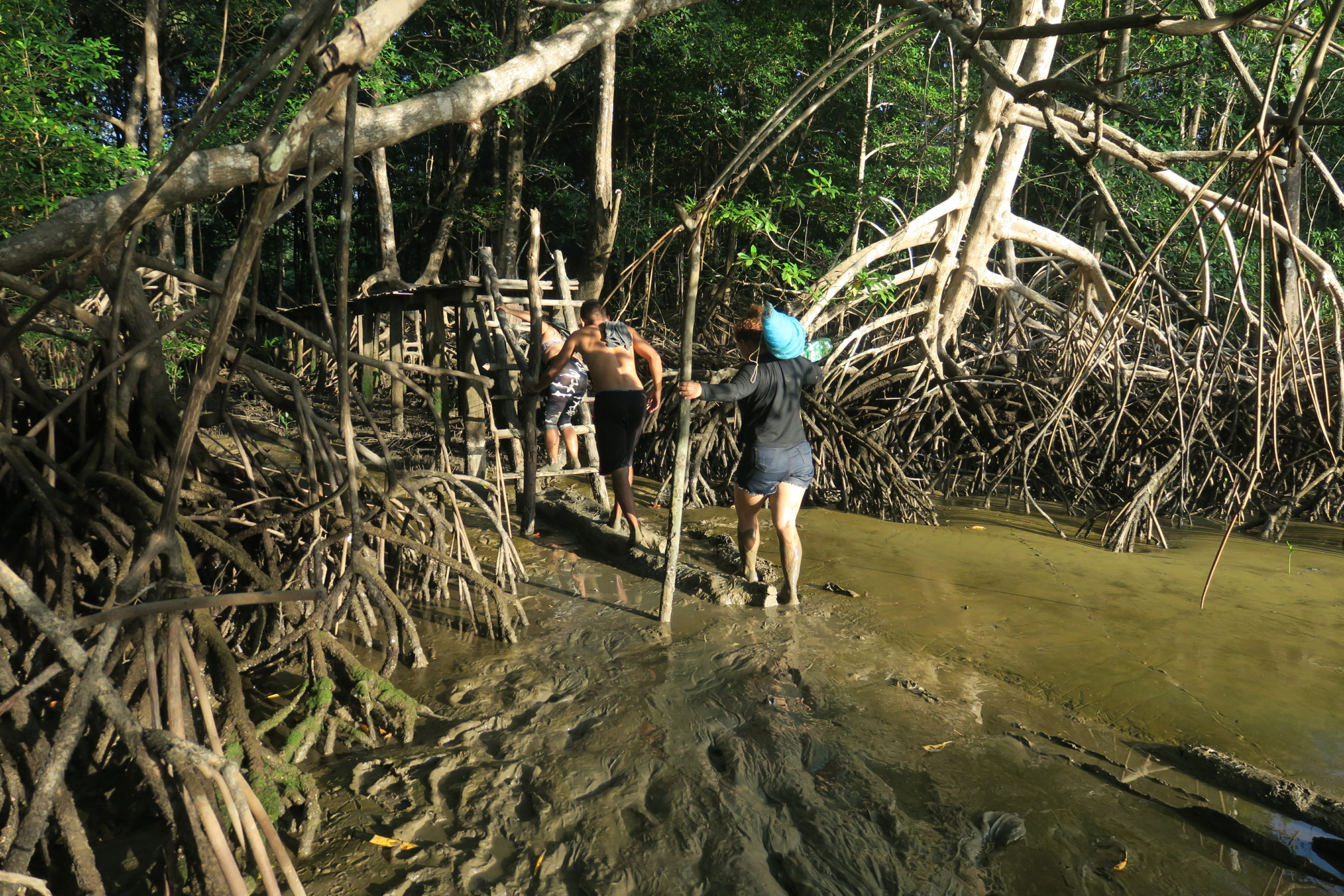The collaborative network aims to bring visibility to communities located in 12 Extractive Reserves in Pará, all linked to the Amazonian mangroves. The group engages in activities aimed at preserving the ecosystem, in addition to seeking knowledge related to financial education.
A iniciativa
- Nome
- The ‘Mothers of Mangroves’ Network, a project that unites shellfish collectors in appreciation of their work, mangrove preservation and financial education.
- Quem está envolvido
- About 700 women from the 12 Resexes of Pará, Rare Brasil, Purpose and other supporters.
- O que é isso
- They conduct meetings to discuss the preservation of the mangroves, promotion of entrepreneurship, classes in financial education and savings clubs.
- Onde está
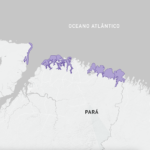 In Pará, in the extractive reserves Mãe Grande de Curuçá, São João da Ponta, Soure, Chocoaré-Mato Grosso, Tracuateua, Caeté-Taperaçu, Araí-Peroba and Gurupi-Piriá, and in the marine extractive reserves Mocapajuba, Mestre Lucindo, Cuinarana and Maranacã.
In Pará, in the extractive reserves Mãe Grande de Curuçá, São João da Ponta, Soure, Chocoaré-Mato Grosso, Tracuateua, Caeté-Taperaçu, Araí-Peroba and Gurupi-Piriá, and in the marine extractive reserves Mocapajuba, Mestre Lucindo, Cuinarana and Maranacã.
Mangroves are birthplaces for various marine species, providing shelter for mammals, birds, reptiles and insects and also serve as a source of revenue for the families who reside in coastal areas. In addition, they play a key role in climate security: They absorb up to five times more carbon than terrestrial forests and serve as a barrier against extreme events. It is in this context that the “Mothers of the Mangrove” emerges, a network formed of about 700 women who live on the Amazon coast of Pará and contribute to the preservation of the biodiversity of this ecosystem.
One of these women is Sandra Regina Pereira Gonçalves, 52, the granddaughter and daughter of shellfish collectors. Born and raised in Curuçá, Pará, she has been involved with social movements aimed at protecting the environment since the late 1980s. In fact, Sandra was one of the petitioners for the creation of the Mãe Grande de Curuçá Extractive Reserve (RESEX), officially founded by decree in 2002. The purpose of a RESEX is to ensure the sustainable use and conservation of nature, in addition to protecting the livelihood and culture of the local extractive population.
The shellfish harvester reports that the community has always been dedicated to raising awareness among tourists and the population, especially the younger generations, to avoid damage to mangroves. “We inform people so that they won’t degrade, remove wood or burn the surrounding areas, since the environments are fragile. We hold meetings, forums for debate and seminars,” she explains.
Gonçalves also emphasizes that the preservation of the mangroves is fundamental for marine life. The shellfish that they catch depend on this environment to feed and survive, like the Turu mollusk, which feeds on wood from naturally fallen mangrove trees. The mangrove also serves as a spawning area for fish.
According to the team from Rare Brasil, a social organization that supports the Mães do Mangue network, the traditional way of life has been preserved thanks to the way the women employ sustainable management, which contributes to the environment’s conservation.
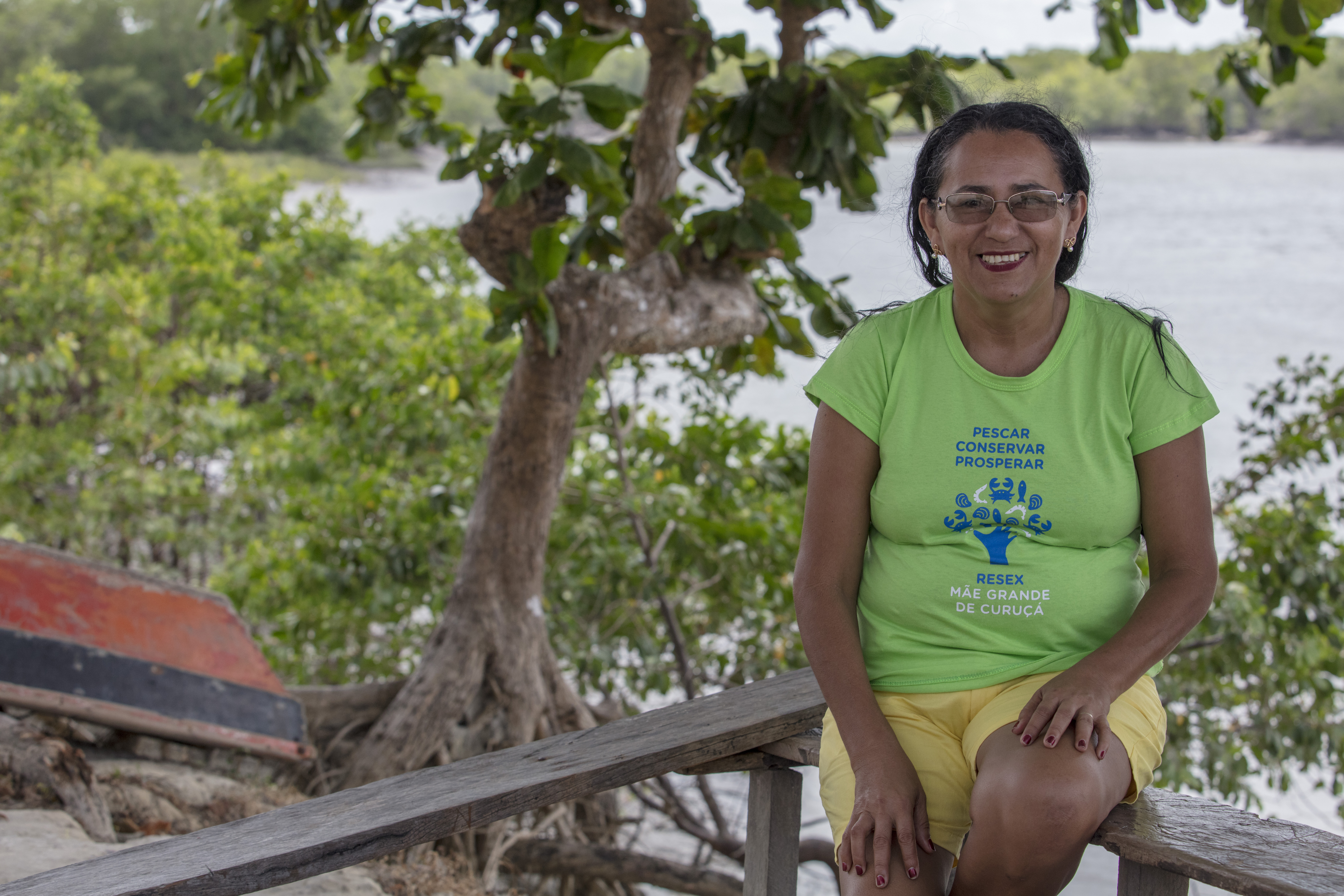
We inform people so that they won’t degrade, remove wood or burn the surrounding areas, since the environments are fragile. We hold meetings, forums for debate and seminars
Sandra Regina Pereira Gonçalves, 52, granddaughter and daughter of shellfish collectors
For example, Maria de Fátima Vieira de Sousa, 39, has been planting trees with her husband since 2012 and often brings along teenagers from their family to encourage them to be environmentally conscious. “We take two or three days to look for devastated areas in the mangrove. And we take another two to five days to do the planting,” she explains. A resident of Curuçá, she is also part of the Mães do Mangue and believes that the network plays an important role in sharing knowledge in search of solutions for a more preserved mangrove.
The Mangrove Atlas, published in 2018 by the Ministry of Environment and Climate Change, indicates that about 80% of Brazil’s mangroves are located in three states of the Legal Amazon: Maranhão (505,000 ha), Pará (390,000 ha) and Amapá (226,000 ha). In Pará, there are mangroves in the extractive reserves Mãe Grande de Curuçá, São João da Ponta, Soure, Chocoaré-Mato Grosso, Tracuateua, Caeté-Taperaçu, Araí-Peroba and Gurupi-Piriá, and in the marine extractive reserves Mocapajuba, Mestre Lucindo, Cuinarana and Maranacã.
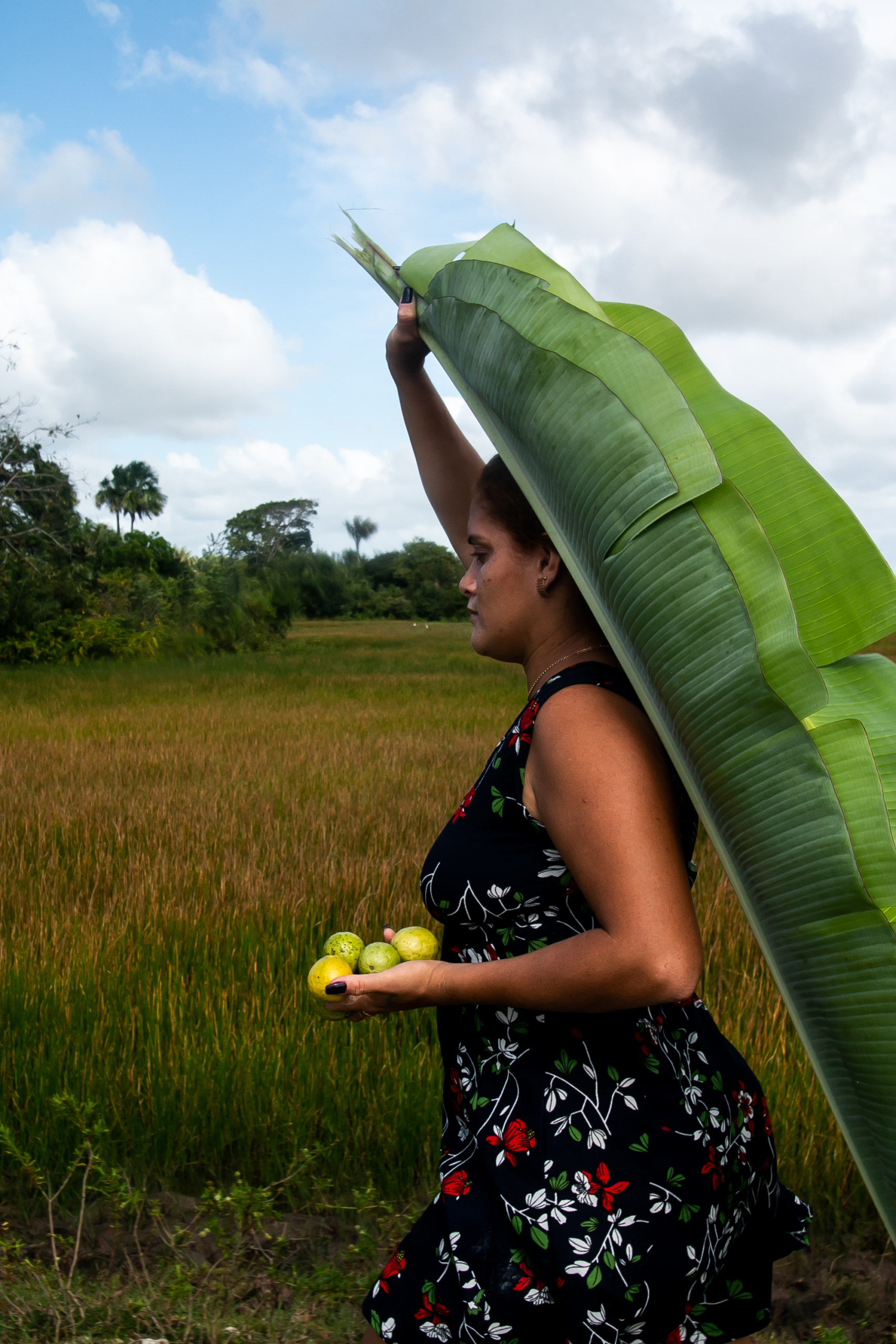
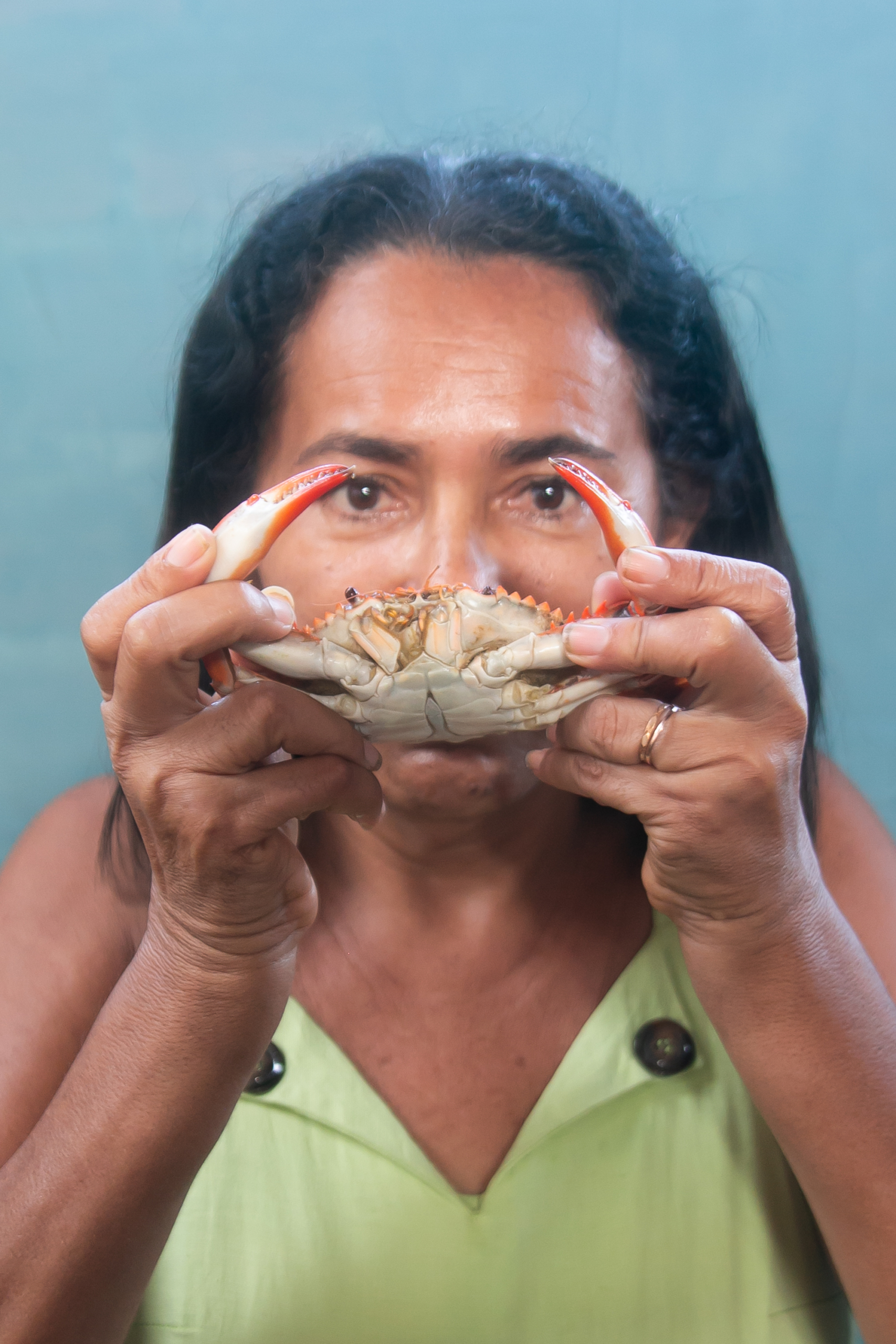
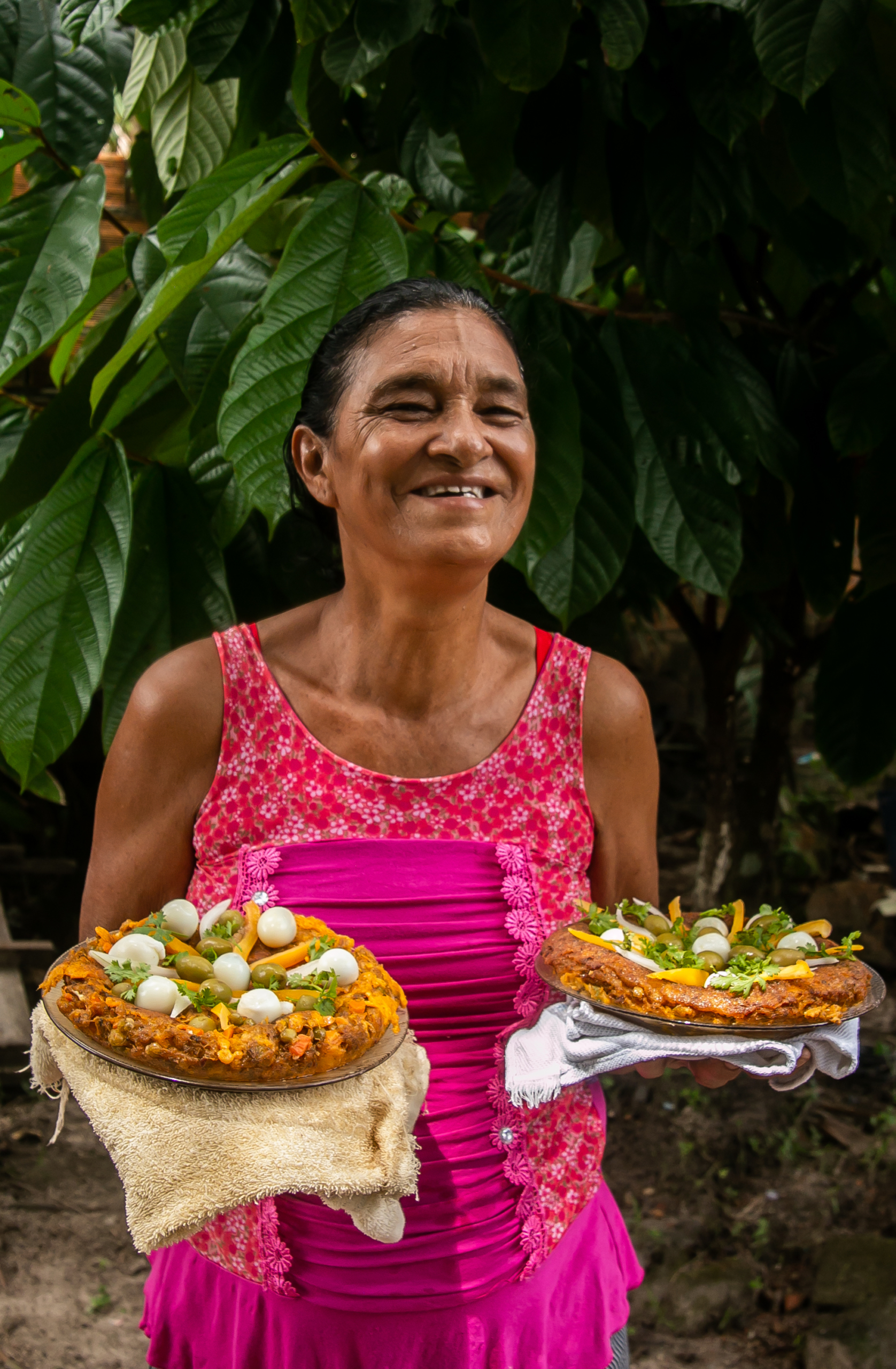
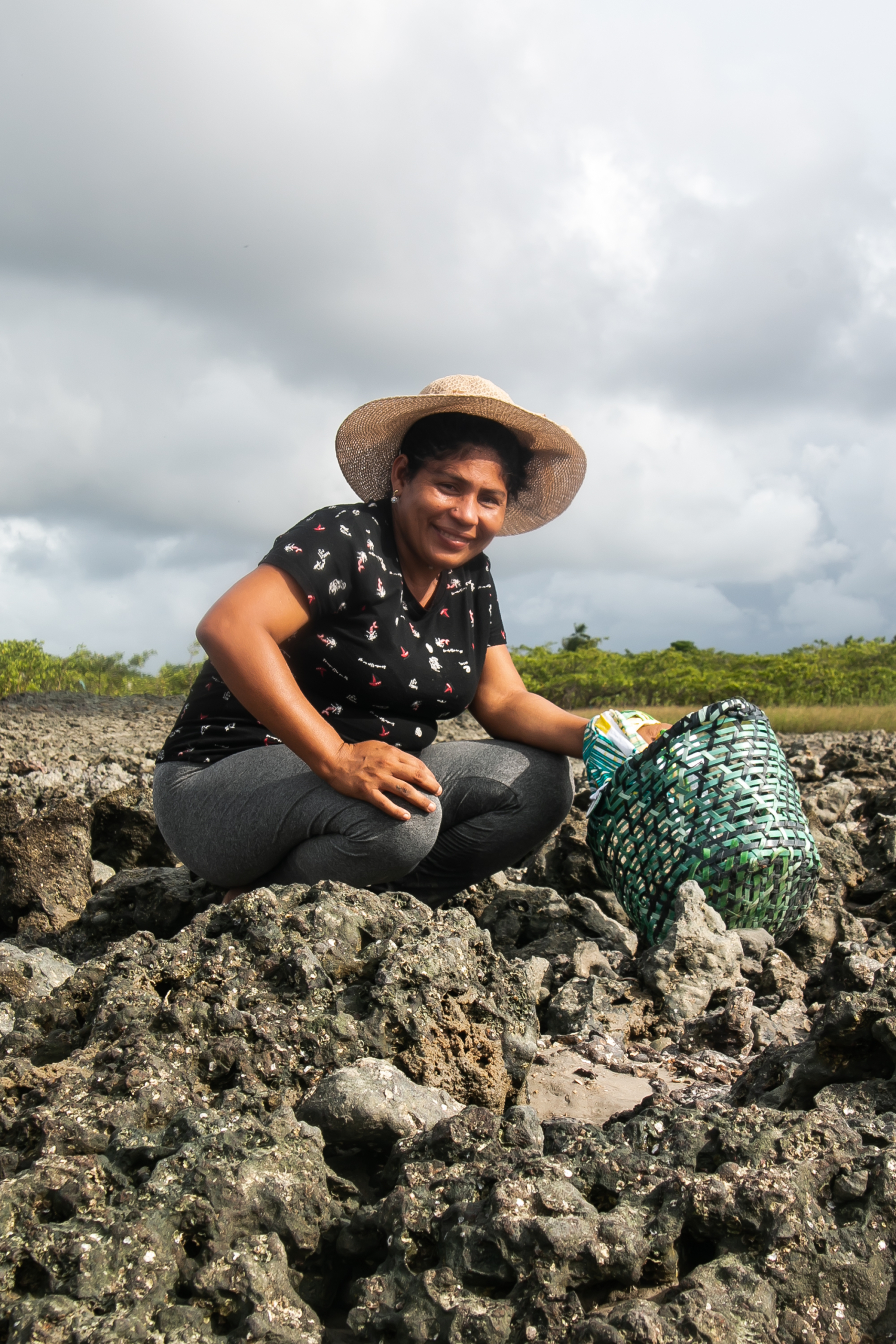
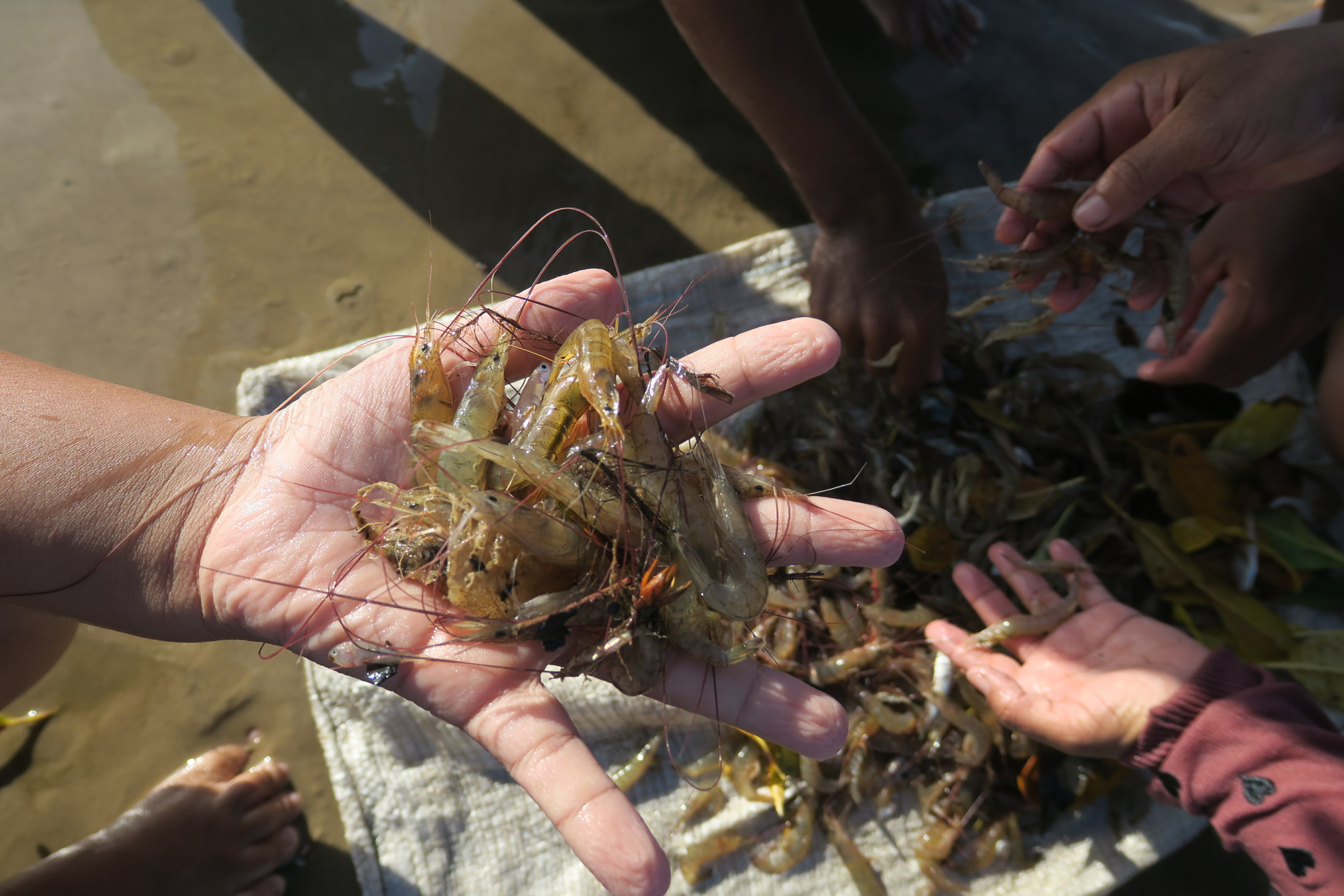
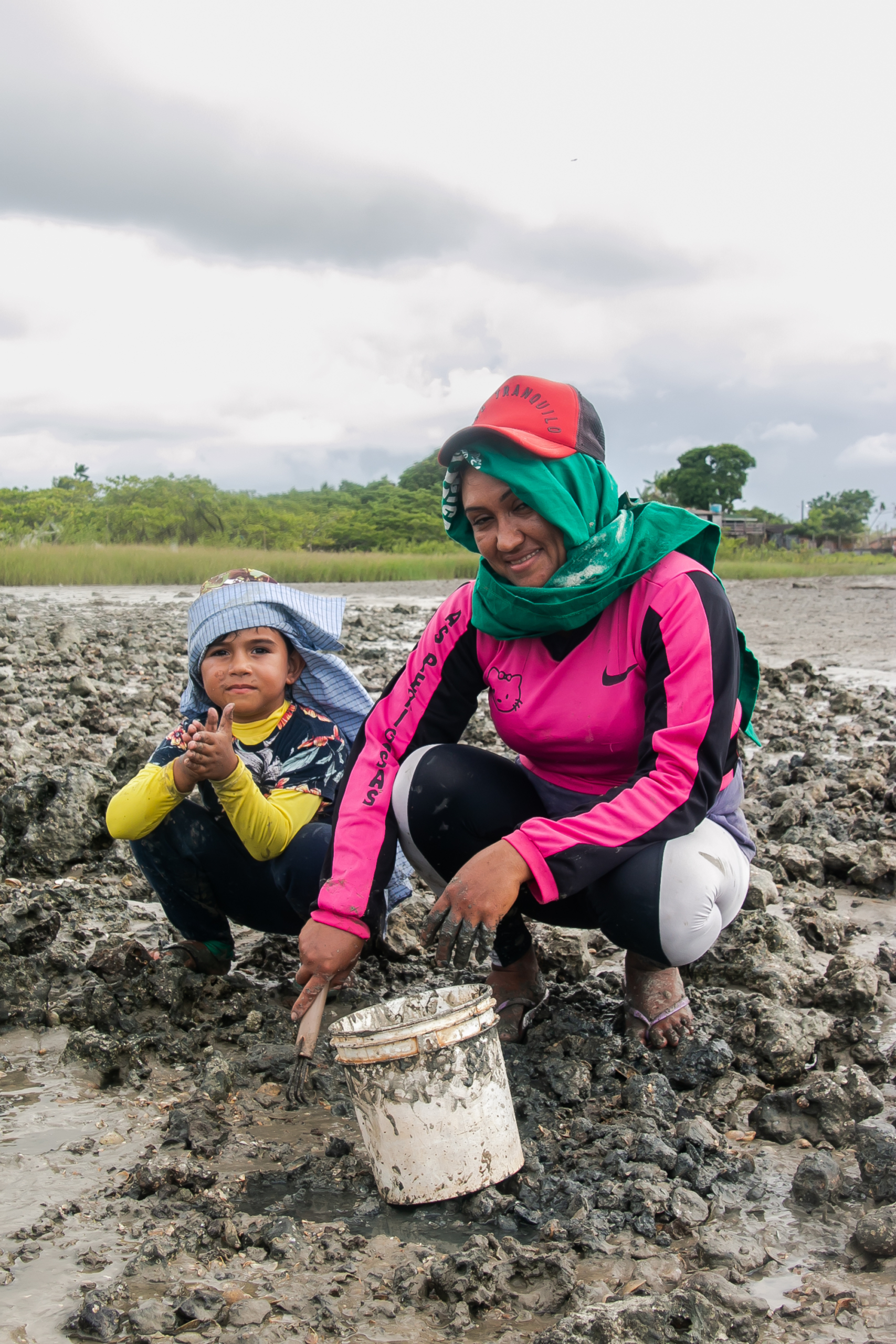
According to Rare Brasil, reserves contribute to minimizing the larger-scale impact on the mangroves, caused directly by people. However, to a lesser extent, the ecosystem is subject to burning, logging and real estate exploitation in the surroundings of the territory. This is why it is important to unite the local population for conservation.
About the network
The Mães do Mangue network unites shellfish harvesters that live in the 12 reserves in Pará. The project began in 2021 as a publicity campaign about the work of women. The campaign, led by Purpose and Rare Brasil, presented four videos and a book of recipes, highlighting the environmental protection, gender relationships, constructions of identity and culture and the ancestral connection with mangroves.
For instance, in the first two episodes, the women highlight the importance of fishing and catching crabs and shellfish at the appropriate time of year for each species, in order to preserve the biodiversity. There should be no fishing during their breeding season. Meanwhile, the book features family recipes with ingredients collected for their own food and for commerce, like the Turu. It can be eaten raw with salt and lemon, with a vinaigrette or cooked in a tasty broth.
For Gonçalves, those who work in the mangroves live in invisibility. Thus, the campaign emerged to demonstrate the leading role that the shellfish collectors play and the importance of having reserves to protect the mangrove vegetation and the reflecting pool. The campaign also aimed to inspire and engage communities in the defense and protection of the ecosystem, based on the actions of these women.
As such, after the promotion, in October 2021, the women decided to create the network. For Miraci Negrão de Lima, 49, the group is essential in helping women to fight together for the preservation of the mangroves. “I breathe the mangrove. My family breathes the mangrove. And, for me, the network is incredibly important in raising awareness related to the mangrove. And, as a network, we also fight so that we, women shellfish harvesters, will be more valued,” says Miraci, also a resident of Curuçá.
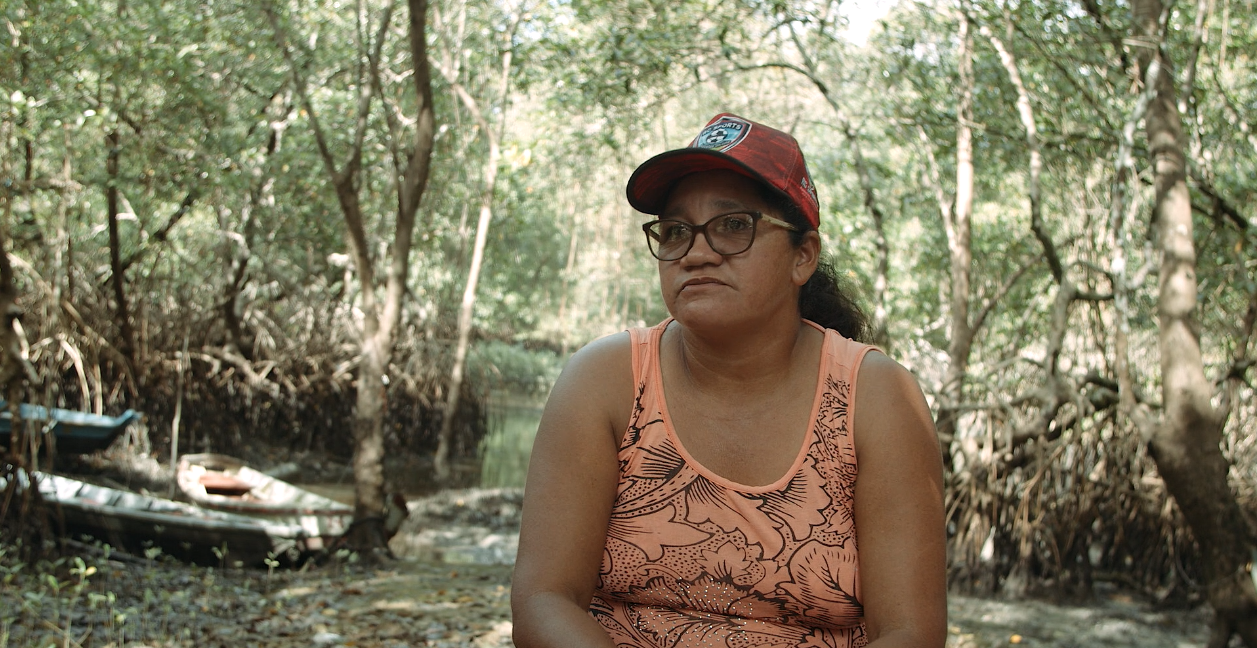
I breathe the mangrove. My family breathes the mangrove. And, for me, the network is incredibly important in raising awareness related to the mangrove. And, as a network, we also fight so that we, women shellfish harvesters, will be more valued.
Miraci, a resident of Curuçá
The Mães do Mangue provides initiatives in financial education, savings clubs, encouragement for entrepreneurship with a focus on the socio-biodiversity of the mangroves and fairs. The projects were structured by Rare Brasil with the support of several partners, including institutes, foundations, government agencies and universities.
According to Rare Brasil, the financial education classes began to be sent through videos on WhatsApp. The content contains information, concepts and activities based on the daily experience of women so that it is easier to put lessons into practice in everyday life. The idea is to migrate the course to a hybrid model with online and in-person classes.
In terms of the savings clubs, the network has 38 assets that contributed to women saving more than R$150,000 in one year. Sandra Gonçalves explains that there are two types of savings. The collective fund collects R$5 from each woman for the snack offered at the monthly meetings, which address issues ranging from environmental matters to public health and safety. Meanwhile, the individual fund is for women to save between R$10 and R$50 per month to form an emergency reserve or to buy something they want.
“It’s an incentive for women to learn how to save money and make their dreams come true. There was one woman who had dreamed of having a bicycle as a child and was able to buy it now with the money she saved up,” says Gonçalves.
Last year, the network had the opportunity to present the initiative to members of the Rede de Mulheres Pescadoras da Costa dos Corais [“Network of Fisherwomen of the Coral Coast”] in the state of Pernambuco. According to Rare, the next step is to improve women’s relationship with banking services so that they can start migrating from collective savings to digital bank accounts. At the moment, the women keep their money in cash.



